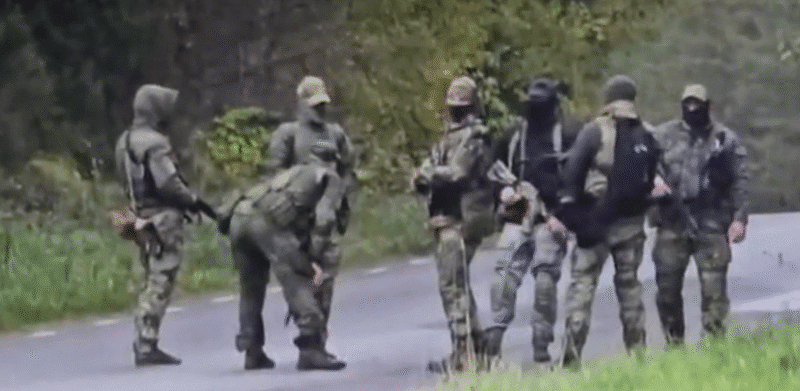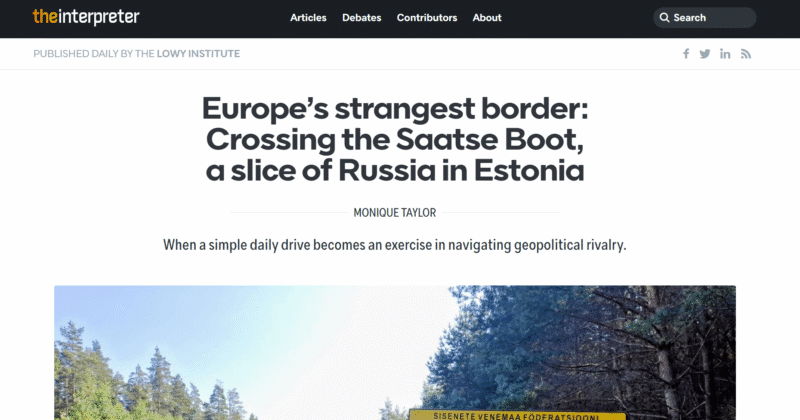
Armed Russian soldiers seen in and around Saatse Boot. Source: PPA
Last week, the Eur-Asian Border Lab concluded its dissemination events with a field excursion to southeastern Estonia, exploring one of Europe’s most peculiar border anomalies – the Saatse Boot. Just hours after our group crossed this narrow slice of Russian territory embedded within Estonia, authorities closed the passage following reports of an unusually large Russian military presence in the area.
Monique Taylor, University Lecturer at the University of Helsinki, who was part of the series of dissemination events, joined us for the excursion. In her recently published piece for The Interpreter by the Lowy Institute, she reflects on what it means when “a simple daily drive becomes an exercise in navigating geopolitical rivalry.”
The Saatse Boot allows vehicles to pass through approximately one kilometre of Russian territory without a visa, as long as they don’t stop. This arrangement dates back to 1944, when Soviet authorities redrew internal boundaries between the Estonian and Russian Soviet republics. What was once an administrative line within the USSR became an international border after Estonia’s independence in 1991, later reinforced through Estonia’s accession to the EU and NATO.
Taylor’s article examines how this strange territorial fragment reveals broader patterns of infrastructural geopolitics along Europe’s northeastern borders. The temporary closure demonstrates how even limited military activity can disrupt everyday mobility, affecting not just Estonian transit routes but the Seto borderland community whose families, churches, and cemeteries now span both sides of the frontier.
For the Eur-Asian Border Lab, the timing was both fortuitous and unsettling. Our field excursion was intended to explore how borders function as lived realities rather than abstract geopolitical concepts. The closure hours later highlight precisely that point – borders are deeply dynamic sites where landmarked boundaries, security concerns, local livelihoods, and historical continuities collide.
Read Monique Taylor’s full analysis in The Interpreter:
